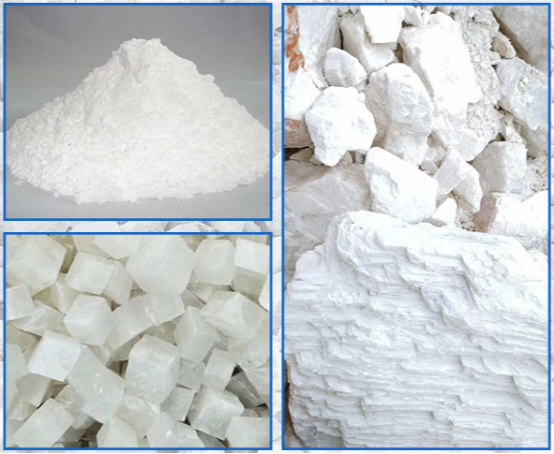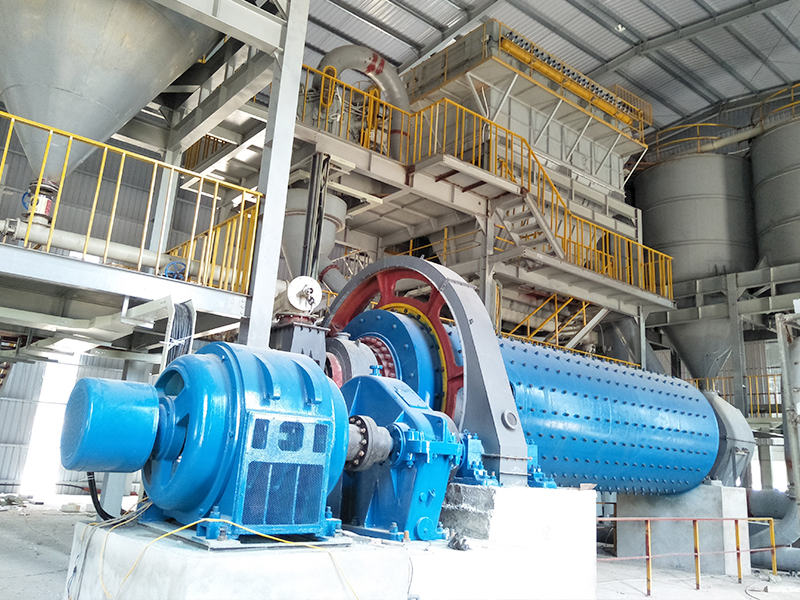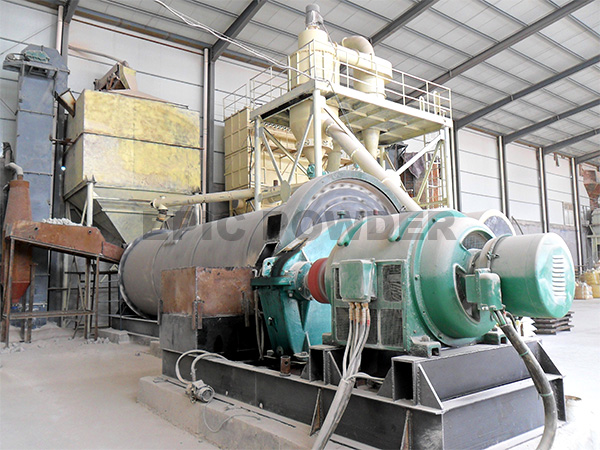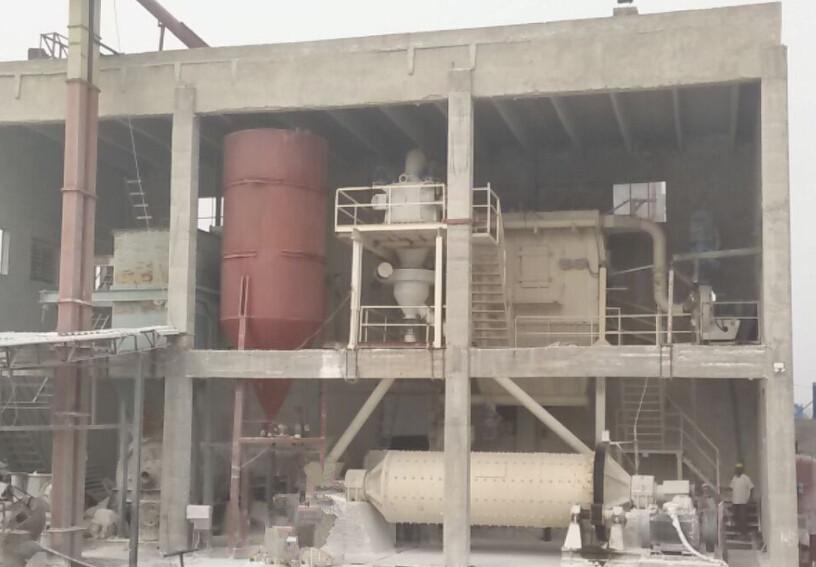NO. 369, Road S209, Huanxiu, Qingdao City, China
calcium carbonate

Application and research of calcium carbonate in the field of new materials
coatingIn recent years, with the continuous strengthening of national environmental protection regulations, the development of water-based coatings, powder coatings, high-solid coatings, inorganic coatings, and other green environmental protection coatings and the use of raw materials have received more and more attention.
In the field of powder coatings, as the European Union began to include barium sulfate in the scope of heavy metal detection, the use of barium sulfate in fields such as automobiles, building materials, food packaging, and children's toys has been greatly restricted. Therefore, calcium carbonate is a good substitute for a more green and environmentally friendly raw material.
In terms of water-based coatings, the application research of calcium carbonate is also favored. The nano-calcium carbonate prepared by Liu Yaxiong and others can replace 20% to 30% of titanium dioxide and 100% of light calcium carbonate when used in water-based coatings. The contrast ratio of water-based coatings, scrub resistance, alkali resistance, water resistance, aging Performance, and other indicators are improved by more than 50%.
In terms of functional coatings, Huang Xingjian and others have developed a diffuse reflection tunnel fireproof coating and construction method. Among them, 5% of titanium dioxide is filled, 8% of lithopone or zinc oxide, and 43% of heavy calcium carbonate is filled. This coating product can provide qualified tunnel lighting while reducing operating costs. On the premise of not increasing the original lamps in the tunnel, the tunnel wall is used to reflect the light repeatedly to effectively improve the brightness in the tunnel. Effect.
On the whole, calcium carbonate can meet the functional requirements in functional coating products, and at the same time, it has the effect of high filling and greatly reduces the cost.
stone paper
Stone paper, also known as composite paper, uses calcium carbonate as the main raw material, and polymer resin and other additives as auxiliary materials. The st paper does not require water and wood pulp in the production process, nor does it generate waste gas, wastewater, and other harmful wastes, which can save resources and protect the environment. The stone paper itself is stable and will not be corroded by water, oil, and chemicals, and it is bleached without adding water and chemical reagents during the production process, which solves the pollution problem from the root.
Stone paper's main process is to grind the ore into 1500~2500 mesh ultrafine powder; then, about 80% of calcium carbonate and about 20% of resin and additives are made into masterbatch by internal mixer and extruder; finally, by blowing film or calendering equipment.
It is understood that the stone paper manufacturing technology of Jintai Hengsheng Paper is in a leading position in China. The eco-frie stone-based thick paper above microns. The stone-based paper produced by this production process has good longitudinal tensile strength, and the products are mainly used for coated paper, labels, cards, cartons, cartons, handbags, packaging bags, postal paper, and so on.
According to Li Gang, director of the technical department of Jintai Hengsheng Paper Industry: "The so-called 'stone papermaking' is to grind the stone powder into nano-scale stone powder of 1200 mesh and combine with plastic. For every 100 kilograms of raw materials, the stone powder can be added to 65%." The advantages are moisture-proof, waterproof, and anti-corrosion; secondly, it has good folding resistance, strong impact resistance, and low-temperature resistance; it has a wide range of applications, such as refrigerated product transportation, fruit packaging, and replacing most traditional wood pulp paper.
sealant
Silicone sealant is a new type of polymer sealing material. Because of its "silicon-oxygen structure" and "organic group", it is endowed with excellent UV resistance, high and low-temperature resistance, and high humidity resistance. In addition, silicone sealant has a good bonding effect on metal, glass, ceramics, plastics, and other substrates, and is widely used in electronic appliances, lighting, photovoltaics, rail transit, construction, and other industries.
For example, in practical application, the photovoltaic adhesive needs to be constructed on a vertical façade. It is required that the sealant is not drawn, does not flow, and has a small sag, so it must have good thixotropy, otherwise, it will easily pollute the surface of the object to adhere and waste it. glue. Thixotropy is a rheological phenomenon in which the viscosity and shear of a dispersive system change with time. Modified nano calcium carbonate, the surface is coated with organic substances, which greatly improves the compatibility and wettability with organic materials, and effectively improves the thixotropy of photovoltaic adhesive products. Problems such as low strength and poor thixotropy.
friction material
With the advancement of science and technology, people's requirements for friction materials are getting higher and higher, not only good mechanical transmission and braking performance but also new pursuits for environmental protection and user comfort. Ordinary materials generally have defects such as grain boundaries, dislocations, and holes, while whiskers do not have these defects, and their atomic arrangements are highly ordered.
Calcium carbonate whiskers have the properties of high wear resistance, heat resistance, thermal recession, and good thermal recovery. In addition, calcium carbonate whiskers are rich in sources, cheap and environmentally friendly, and can greatly improve the mechanical properties of friction materials. It is a friction-enhancing material with broad application prospects.
Li Yuhong et al. prepared reinforced friction materials with different calcium carbonate whisker contents by dry hot pressing and studied the effect of calcium carbonate whisker content on the friction properties, wear properties, physical properties, and mechanical properties of friction materials. The results show that adding an appropriate amount of calcium carbonate whiskers helps to improve the friction and wear properties and mechanical properties of the material. When the mass fraction of calcium carbonate whiskers is 12%, the average friction coefficient, average wear rate, average impact strength, and Rockwell hardness has been greatly improved.
PVC building materials
In recent years, polyvinyl chloride (PVC) has become an emerging building interior decoration material, and various sheets, pipes, plates, soft films, and profiles are widely used in the construction industry. However, the strength, toughness, wear resistance, hydrophobicity, and colorability of PVC materials are often difficult to take into account. Therefore, modification treatment has become the "only way" for PVC materials.
Now, there are many ways to modify PVC materials. For example, elastomer-modified PVC and rigid particle-modified PVC in the physical modification; copolymerization modification, crosslinking modification, graft modification, chlorination modification, etc. in chemical modification.
Among them, rigid particle modification is to add rigid particles such as polymethyl methacrylate, polystyrene, styrene-acrylonitrile, nano-CaCO3, nano-SiO2, ultra-fine kaolin, montmorillonite, Yunlin to the matrix to increase the polymer The rigidity of vinyl chloride. In practical applications, calcium carbonate can improve the elastic modulus of PVC and reduce the thermal expansion coefficient and shrinkage rate of PVC. Moreover, calcium carbonate-modified PVC with different morphologies has different characteristics and can be suitable for various application scenarios.
Dong Dongdong et al. prepared five different morphologies of calcium carbonate particles by chlorination method: flake, rhombus, rod, sphere, and cube, and studied the effect of different morphologies of calcium carbonate particles on the mechanical properties of soft polyvinyl chloride (PVC) films. Impact. The results show that calcium carbonate with different morphologies can improve the mechanical properties of PVC films, and the tensile strength and elongation at the break of PVC films are significantly improved. Among them, rod-shaped calcium carbonate has the best effect on improving the mechanical properties of PVC films.
Functional filler masterbatch
Calcium carbonate functional masterbatch is a technology that is highly compatible with calcium carbonate powder with polymer synthetic resin. At present, calcium carbonate plastic masterbatch products with high filling rates are positioned to replace traditional plastic raw materials and greatly reduce the consumption of petroleum resources and forest resources. For example, it becomes the raw material for the production of film grade and hollow blow molding grade plastics.
Judging from the current development situation, the main research contents of its products and technologies include research on calcium carbonate high-filling masterbatch with degradation function (calcium carbonate ≥ 75%); compound extrusion process, screw structure, and compounding method; Has controllable degradation function; realize automation, intelligence, dust-free masterbatch production line integration, etc.
In 2019, Guangzhou Stone Manufacturing Environmental Protection Technology Co., Ltd. completed the "development of highly degradable calcium carbonate masterbatches", and the products developed in this project achieved several innovations. For example, by uniformly mixing a variety of polymer materials with inorganic powders, in film applications, the calcium carbonate content in the final film material can be greater than 50%, and the mechanical properties can still meet the requirements of the national standard; the score structure of extrusion equipment can be modified and Recombination, suitable for extruding and granulating calcium carbonate high-filling materials, improving the dispersion and blending effect; the masterbatch has environmental protection properties and integrates various degradation technologies such as photodegradation and thermo-oxidative degradation in the "stone-made" stone plastic masterbatch. on granular modified materials.
In July 2021, Lianzhou Cairns Nanomaterials Co., Ltd. announced a nano-calcium carbonate masterbatch, its preparation method, and the application of patented technology for UPVC strengthening and toughening. Among them, the nano-calcium carbonate masterbatch is made of coating modified nano-calcium carbonate, PVC resin, calcium-zinc composite stabilizer, polyurethane prepolymer, polytetrahydrofuran polyol, lubricant, and ethylene vinyl acetate copolymer elastomer. The raw materials are mixed uniformly in batches and then extruded and granulated by a twin-screw extruder to obtain a nano-calcium carbonate masterbatch. The nano calcium carbonate masterbatch prepared by this technology has good compatibility with PVC and good thermal stability. , ACR and other toughening agents, are suitable for industrial application.
Artificial Granite
Artificial granite is a process profile formed by pressing marble, stone powder, binder, and other raw materials into large-sized square materials under an extremely high vacuum, and then curing and reprocessing at room temperature. This kind of stone is not easy to deform, accurate in size, bright in color, high in finish, can be refurbished many times, and environmental protection and no radiation.
In recent years, the production of artificial granite has achieved short-term delivery, waste gas recycling and disposal, wastewater recycling, waste residue digestion, and waste recycling technology, occupying a place in the field of environmentally friendly new materials.
In August 2021, Guangdong Baoyun Stone Industry Co., Ltd. announced a preparation technology of artificial granite imitating natural cracks. The raw materials include calcium carbonate coarse sand, ultra-fine calcium carbonate powder, unsaturated polyester resin, toner, titanium dioxide, and various additives. After compound acid modification and auxiliary agent treatment, the cracking of artificial stone in the production process is reduced, and the defective rate of artificial stone products is reduced. The stone vibration molding machine vibrates the auxiliary materials and calcium carbonate in the mold into artificial stone products with imitation natural cracks.
In July 2021, the Institute of Process Engineering of the Chinese Academy of Sciences announced a method for preparing calcium carbonate functional materials from artificial granite waste. Use artificial granite waste as raw material, remove impurities through a linear vibrating screen or a rotary vibrating screen, and use a cyclone with a diameter of 10 to 200 mm for separation. One or more sodium stearate, titanate coupling agent, aluminate coupling agent, zirconium aluminate coupling agent, and silane coupling agent) to modify the surface of the material, and then dehydrate, After drying and grading, calcium carbonate functional material is obtained. The calcium carbonate functional materials prepared by this technology can be used in the fields of breathable film fillers, coating fillers, plastic masterbatch fillers, ink fillers, and high-end papermaking.
Epilogue
At present, the application of calcium carbonate in the field of new materials is still based on "traditional applications". Traditional materials have become new materials, and calcium powder has not been "rejected". Its value in the new material industry lies in its high filling rate and Broad universality.
At present, domestic calcium carbonate has achieved certain results in ultra-fine, modification, and morphology control, which is conducive to the development of high-value calcium carbonate. Moreover, the green production of heavy calcium and light calcium has made great progress, which is an incomparable advantage for many high-end materials that have not yet been industrialized or lacked production capacity.




Leave a Comment